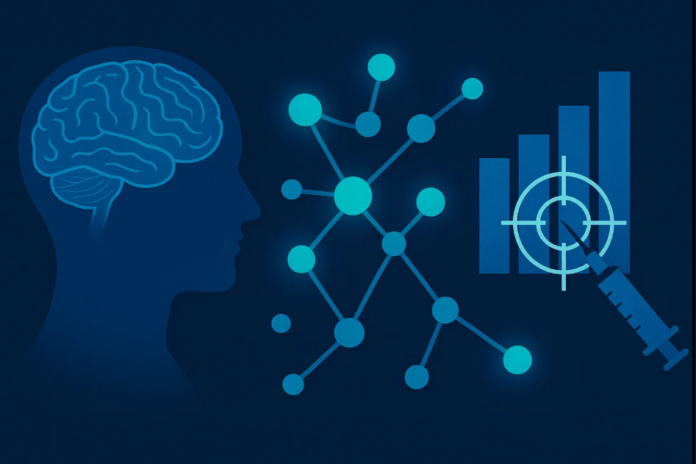There is a huge change happening in the world of modern medicine. Genomics, proteomics, and artificial intelligence are all making big strides, which are quickly broadening the limits of diagnosis and treatment. One of the most groundbreaking parts of this evolution is therapy response prediction, which lets doctors guess how a patient will respond to a certain treatment. The medical community is evolving toward a new way of thinking by adding tumor-agnostic biomarkers to the mix. In this new way of thinking, therapy decisions will be based on the tumor’s molecular signature instead of its location.
Comprehending Therapy Response Prediction in Precision Medicine
The main idea behind therapy response prediction is to use molecular data to guess how well certain treatments will work for certain patients. It uses different “omics” disciplines, like genomics, transcriptomics, proteomics, and metabolomics, to figure out how medicines affect cells in biological systems.
Doctors can use these kinds of forecasts to figure out:
- Which medicines are most likely to succeed for a specific patient
- How to reduce bad side effects.
- When to change treatment strategies to get better results
Therapy response prediction uses AI-driven analytics to turn large amounts of data into useful information that doctors can use to customize treatments in real time. This method makes sure that each patient gets the best treatment for them based on their unique biology, not on common medical assumptions. Nexomic is at the forefront of integrating such predictive models into real-world healthcare systems, empowering clinicians with actionable insights.
Tumor-Agnostic Biomarkers: A New Way to Treat Cancer
In the past, the site of the tumor (lung, breast, colon, etc.) has been used to determine how to treat most cancers. The discovery of tumor-agnostic biomarkers, however, challenges this commonplace thinking. These biomarkers are molecular indicators that go past tissue type and instead cognizance on the genetic and molecular trends that are causing the malignancy.
For instance, if two sufferers have distinct varieties of cancer but the same genetic mutation, tumor-agnostic biomarkers can help doctors determine out to administer the same centered treatment to each of them. This molecular-first approach:
- Makes it easier for more people to get effective therapies for different forms of cancer
- Speeds up the process of developing and approving drugs
- Gives patients with rare or hard-to-treat malignancies hope
Researchers and doctors are changing the way cancer is categorized and treated by adding tumor-agnostic biomarkers to clinical workflows. This is making it possible to have a universal, data-driven approach to oncology. Nexomic is contributing to this transformation by providing advanced analytics and biomarker-based solutions that redefine how cancer therapies are developed and applied.
The Convergence of Multi-Omics and Predictive Intelligence
The true efficacy of precision medicine is in the integration of therapeutic response prediction and tumor-agnostic biomarkers using multi-omic technologies. Multi-omics is the study of many biological layers, such as DNA, RNA, and proteins, to provide a complete picture of how diseases work.
When artificial intelligence analyzes this multi-dimensional data, it produces predictive intelligence that can find patterns that are too small for the human eye to see. This enables scientists to:
- Identify early biomarkers of response or resistance
- Tailor medication combinations
- Anticipate treatment outcomes prior to the manifestation of clinical symptoms.
This synergy is the next step in precision medicine, where the complexity of biology becomes a map to clear treatment. Nexomic’s data-driven frameworks make this integration possible, bridging the gap between research and real-time clinical application.
Changing the effects for patients with insights based on facts
Adding tumor-agnostic biomarkers and therapy response prediction to medical care is ideal for technology; however, it additionally enables sufferers in real methods. The mixture makes it advantageous that treatment options are based mostly on information from the location of trial and errors, which appreciably improves outcomes and cuts down on pointless strategies.
Some of the maximum essential effects are:
- A faster and greater accurate prognosis
- Higher survival quotes way to tailored drug treatments
- Fewer trials and mistakes whilst deciding on remedies.
The collaboration amongst statistics, algorithms, and human understanding is turning into more and more essential for achieving real personalization in healthcare as medicinal continues to change.
Conclusion
The combination of therapeutic response prediction and tumor-agnostic biomarkers is a major step toward personalized medicine. This new method not only makes treatments more accurate, but it also changes how we think about, group, and treat diseases at their most basic level. Companies like nexomic.com, which are main this variation, display what records-driven, omic-powered, particular intelligence can do. Their goal is apparent: to make improvements remembered by ensuring they reach humans. This way that insights from the lab must have an immediate impact on people’s lives at the bedside.

